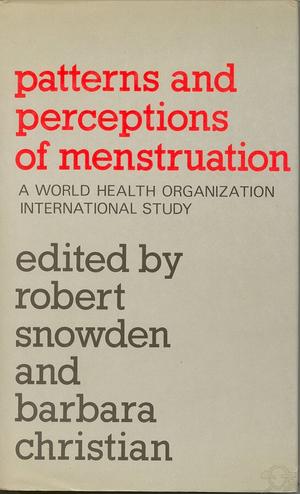Patterns and Perceptions of Menstruation - a World Health Organization International Study
İÇİNDEKİLERCONTENTS Preface Collaborating Sites 1. A Cross-cultural Study of Menstruation Introduction Cross-cultural Perspectives 2. Research Administration and Strategy The Research Sites Study Design General Survey Daily Record of Blood Loss 3. Collection of Menstrual Data from Illiterate Women 4. The General Survey Perceived Characteristics of Menstrual Blood Perceived Physiological and Psychological Sequelae of Menstrual Bleeding Behaviour Associated with Menstrual Bleeding Women's Beliefs Concerning Menstrual Bleeding Reaction to Possible Changes in the Pattern of Menstrual Bleeding 5. Prediction and Recall of Menstrual Events Reference Period Analysis Patterns of Blood Loss Prediction of Bleeding Patterns Recall of Previous Menstrual Events Inaccuracy in Predicting Bleeding Patterns Bleeding Shape Variation in Bleeding Duration, Amount and Shape 6. The Knowledgeable Source Survey Patterns of Menstrual Bleeding The Use of Knowledgeable Sources 7. Conclusions and Implications Geographical Location and Social Stratification Perception of Menstrual Bleeding Prediction and Recall Research Design 8. Perceptions of Menstruation:A Literature Review Amount of Blood Loss Duration of Bleeding Prediction and Recall Blood Characteristics Sequelae of Menstruation Psychosocial Factors Conclusion Appendix A: Annotated Bibliography Appendix B: Frequency Distributions of Responses Given to to the Six Basic Issues Described in Chapter 4 Appendix C: Selected Cross-tabulations of Data for Each of the 14 Socio-cultural Groups Included in the Study Index NOTLARISBN 0-312-59809-2   |



